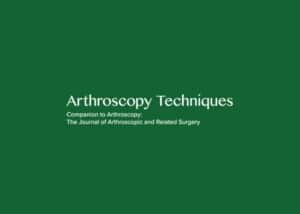
2018 KSSTA
Purpose Quantitative guidelines for radiographic identification of the anterior and posterior ligaments of the proximal tibiofibular joint have not been well defined. The purpose of this study was to provide reproducible, quantitative descriptions of radiographic landmarks identifying the anterior and posterior ligament complexes of the proximal tibiofibular joint. It was hypothesized that consistent quantitative data regarding the radiographic location of the anterior and posterior proximal tibiofibular joint ligament complexes could be identified.
Methods The footprint centers of the individual ligament bundles of the anterior and posterior complexes of the proximal tibiofibular joint were labeled with radio-opaque markers in ten non-paired, fresh-frozen cadaveric knee specimens. Anteroposterior (AP) and lateral radiographs of the proximal tibiofibular joint were obtained, and distances between the markers and pertinent radiographic landmarks were recorded.
Results On AP radiographs, the tibial span of the anterior complex was 12.8±3.9 mm and started at a median of 11.4 mm distal to the tibial plateau; the bular span was 11.6±6.8 mm and started at a median of 5.1 mm from the apex of the bular styloid. The tibial span of the posterior complex was 11.7±8.4 mm and began at a median of 12.1 mm distal to the tibial plateau; the bular span was 11.8±7.9 mm and began at a median of 3.1 mm distal to the apex of the bular styloid. Values were similar for lateral radiographs.
Conclusion The attachment locations of the proximal tibiofibular anterior and posterior complexes could be quantitatively correlated to reliable osseous landmarks and radiographic lines. This information will allow for consistent radiographic assessments of proper tunnel placement intra- operatively and postoperatively during anatomic reconstructions of the proximal tibiofibular joint.
